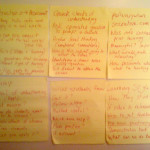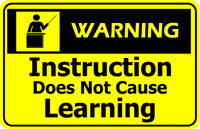On New Year’s Eve 2011, I suffered what my Cardiologist gently refers to as a “near heart attack” many miles from any kind of decent emergency medical support. That’s now about three weeks in my rear view mirror. For those of you who just like the bullet points:
- I’m home, resting comfortably after double bypass heart surgery

Day 1 Post Surgery
- I didn’t suffer any lasting heart damage
- Yes, it hurt like fucking hell at many points along the journey
- I’m a very, very lucky little guy
The rest of this lengthy post is for those of you who like details. I’m still working on building my endurance up from “kitten level”, and wanted somewhere to point all the well wishers (and those who are disappointed) who’d like to know what happened.
One of my favorite old songs is Bonnie Tyler’s “Total Eclipse Of The Heart”, and the line in it “Every Now And Then I Fall Apart.” (Those of you under 28 go watch the video and laugh at what grandpa’s rock and rollers used to look like. Your kids will be doing this, only too soon.)
I’d been having a little pain in my right arm now and then, but since we’d recently moved I’d just put it down to a lot of lifting of boxes and furniture. I’d even promised my wife to call the doctor after the holidays. But no typical heart problem indications.
Not a clue. I’ve had regular stress tests, and in fact a complete physical in October with EKG. Since Diane had a heart bypass 15 years ago we’re pretty aware of issues like this. (Now, I AM a big tub of goo – I don’t exercise, I carry a lot of extra weight, etc.) But there were no indicators at all.
 Just before New Years, we were camping in NE South Carolina on the Georgia border in our new (used) motor home. We’d been out a few days, and it was 10AM New Year’s eve morning. We hiked down a steep hill to the beach with the puggies, and my arm really started to hurt. Soon, it was up around my neck and down the left arm. I felt nausea and chest pain. I had a pretty good guess what it was.
Just before New Years, we were camping in NE South Carolina on the Georgia border in our new (used) motor home. We’d been out a few days, and it was 10AM New Year’s eve morning. We hiked down a steep hill to the beach with the puggies, and my arm really started to hurt. Soon, it was up around my neck and down the left arm. I felt nausea and chest pain. I had a pretty good guess what it was.
We were 15 miles from any city, so we decided to climb back up and drive ourselves in. Diane tore down the rig – hoses, cords, etc – and I drove it out the narrow parts to the street. (She’d never piloted it before.) Just getting from driver to seat to the passenger seat had me cursing a blue streak.
She drove to the tiny local hospital, they did an EKG (normal) chest x-ray (normal) and gave me nitro for the pain, which helped. That exhausted their cardiac treatment options.

My Cardiologist, Dr. Richard Umbach
Luckily, my Cardiologist was doing New Year’s Eve rounds back in Columbia, they sent him the EKG and info. He said he didn’t like it at all, and ordered me in an ambulance for an 80 mile ride. Wouldn’t let me go in a private car. (Love that guy.)
Later that evening, he said I’d had a “near heart attack” but there was no damage, yet. But he was so worried he wouldn’t let me leave the hospital. I sat there for three days in no pain at all, waiting for the cath lab to open (closed for the holiday). When they did the angiogram on January3rd, they found I had 4 blockages. (For those of you playing at home, this is NOT a good thing.) The next day they did surgery. Fixed all four with two bypasses, and I’m good to go.
Apparently this is genetic, not a result of too many Doritos. But he says being a big tub of goo isn’t helping, any.
And, yes, his instincts were right. Had I gone home it’s entirely possible one of those four blockages could have come loose and caused a stroke, or a big heart attack before I could have gotten back to the hospital.
I smile a lot when he comes in the room.

My Heart Surgeon, Dr. Robert Zurcher
The other guy that makes me smile is my surgeon — he snuck me in to a very full schedule. (Somehow, even though the surgery and catheterization labs close for four days over a holiday, people still seem to have heart problems. Crazy.) But he thought it was important enough to get me in at 7AM the day after they found the problem — I think that’s kind of like “…if we want to be able to bill this one we’d better get him on the table pronto.”
(Trivia: He got out of medical school two years before Bonnie Tyler won her Grammy for “Total Eclipse Of The Heart”. I’m not sure if he’s a fan or not.)
He did such a good job that I was up and running around (well, ok, pushing a walker very slowly) two days after surgery. And out of the hospital in four days. Which is very, very good results. Fantastic results. I’m thinking about entering some marathons if they have a category for “people driving motorhomes”.
 My wife? She drove the 31′ motorhome all the way back to our house (80+ miles) on two-lane country roads and pronounced it “easy”. She’s a plucky farm girl who grew up driving tractors and draft horses. This thing is nothing. She’s getting a little tired of waiting on me hand and foot, so I don’t think I can stretch that out much longer. I’m pretty sure the surgeon is going to let me start driving again next week, and picking up things that weigh more than 15 pounds. (All three pugs, unfortunately, fall into that category.)
My wife? She drove the 31′ motorhome all the way back to our house (80+ miles) on two-lane country roads and pronounced it “easy”. She’s a plucky farm girl who grew up driving tractors and draft horses. This thing is nothing. She’s getting a little tired of waiting on me hand and foot, so I don’t think I can stretch that out much longer. I’m pretty sure the surgeon is going to let me start driving again next week, and picking up things that weigh more than 15 pounds. (All three pugs, unfortunately, fall into that category.)
What did I learn from this experience?
- If you’re going to have a heart attack, you should do it near Providence Hospital in Columbia, SC. These people are the best of the best.
- You can’t be shy about showing off your junk to cute nurses if you’re having heart surgery, and they don’t care about looking at it, anyway
- There’s not enough morphine in the WORLD for when they take out the chest tubes
 I was six years old. My first grade teacher Mrs. Larsen was handing back our papers, and I knew my educational career was finished. I’d tried as hard as I could to keep my letters within the wide-lined paper — both capitals and lower-case — but by the end of the page things had gotten pretty messy.
I was six years old. My first grade teacher Mrs. Larsen was handing back our papers, and I knew my educational career was finished. I’d tried as hard as I could to keep my letters within the wide-lined paper — both capitals and lower-case — but by the end of the page things had gotten pretty messy.








